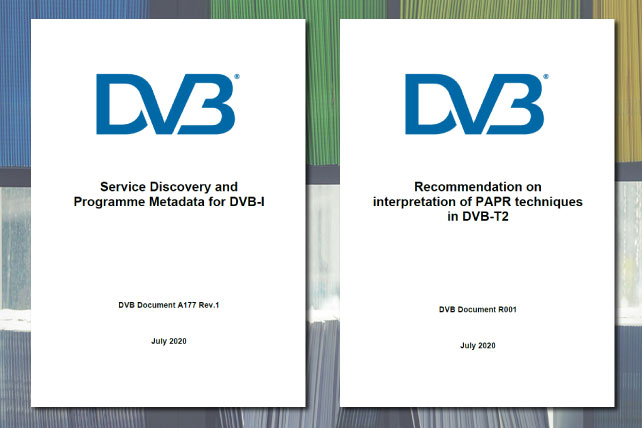
New in the specifications library: DVB-I update and DVB-T2 PAPR recommendation
DVB has this week published two BlueBooks, one an update of the DVB-I Service Discovery specification and the other a recommendation on how PAPR reduction techniques in DVB-T2 should be interpreted.
Both BlueBooks are available from the Specification Library.
A177 Rev.1
DVB BlueBook A177 is the specification for Service Discovery and Programme Metadata for DVB-I. It was first published in November 2019; the new revision was approved during the recent DVB meeting cycle and has been forwarded to ETSI for publication as a formal standard.
Revision 1 of DVB-I Service Discovery provides new information on handling security-related matters along with new interoperability profiles that identify minimum XML support.
Some previously unhandled cases are now covered; for example, a banner can be signalled when the playout of a clip is complete and there are no more clips in the playlist. Finally, it also provides information on extensibility, including the ability to signal non-DVB delivery mechanisms for service instances.
R001
DVB BlueBook R001 is the first official DVB Recommendation and concerns techniques specified in DVB-T2 for the reduction of PAPR (peak average power ratio). The DVB Steering Board decided this document would not be forwarded to ETSI and that publication as a recommendation would be sufficient.
Questions to DVB in 2019 highlighted the fact that some aspects of the DVB-T2 specification may benefit from clarification: in particular, the two PAPR reduction techniques and especially the active constellation extension (ACE) feature. The use of ACE has been shown to allow potentially significant transmitter power savings (which increase with reducing order of modulation).
To DVB’s knowledge, the ACE technique has not yet been deployed in real DVB-T2 networks, however there is at least one commercially available implementation of the technique. Its implementation based on the DVB-T2 specification alone requires several steps of deduction and inference, and BlueBook R001 aims to spell out those steps in detail in order to make implementation easier and avoid the risk of misinterpretation.
